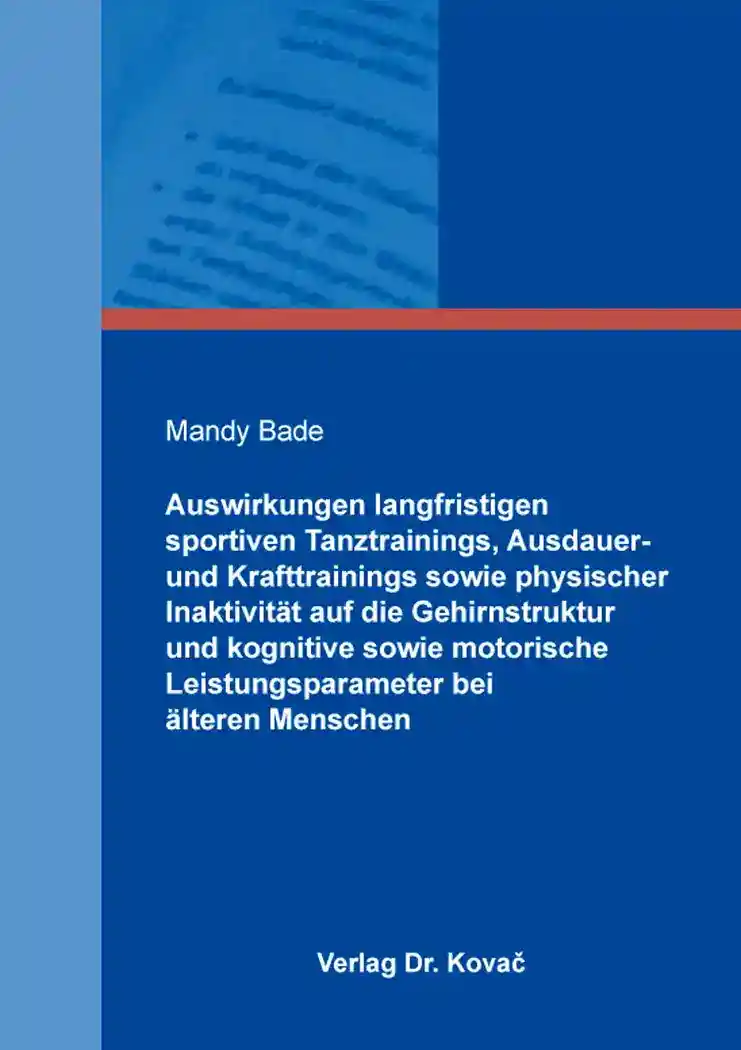Mandy BadeAuswirkungen langfristigen sportiven Tanztrainings, Ausdauer- und Krafttrainings sowie physischer Inaktivität auf die Gehirnstruktur und kognitive sowie motorische Leistungsparameter bei älteren Menschen
Schriften zur Sportwissenschaft, volume 160
Hamburg 2021, 294 pages
ISBN 978-3-339-12304-6 (print) |ISBN 978-3-339-12305-3 (eBook)
About this book deutschenglish
The growing number of elderly people in the population is accompanied by an increased prevalence of chronic diseases, creating a major challenge for the healthcare system in the future. Appropriate measures are therefore needed to support healthy aging combined with a high quality of life.
The aim of the study was to investigate the influence of different physical activities on neurostructural, molecular, neuropsychological and motor parameters in healthy elderly people aged 60 to 85 years over a long-term period of about 5 years. Therefore, a longitudinal study was conducted to investigate to what extent athletic dance training and fitness training differ in terms of effects over a time period of about 5 years. Furthermore, a cross-sectional study was used to examine the differences between the groups of athletic dance training, fitness training, and physical inactivity.
The longitudinal study showed that dance as well as fitness training lead to an increase in the volume of the amygdala. In addition, the dance group improved verbal memory performance. Both groups demonstrated significant improvement in balance ability over the long-term. The cross-sectional study revealed that both active groups differed from physically inactive individuals in verbal memory performance as well as balance ability. In addition, the fitness training group demonstrated advantages in processing speed and reaction time over the physically inactive. In terms of endurance performance, fitness training and physical inactivity, but not the two active groups, differed from each other. Finally, a significant correlation between verbal memory performance and balance ability was proven.
It can be concluded that both dance and fitness training have a positive effect on neurostructural, neuropsychological as well as motor performance parameters in the elderly and can thus contribute to the preservation of brain structure as well as cognitive and motor functions in old age.
Keywords
AktivitätAltersfitnessDemenzpräventionGerontologieKognitionKognitive LeistungsfähigkeitNeurowissenschaftSeniorenSeniorensportSportwissenschaftTanzTanzinterventionIhr Werk im Verlag Dr. Kovač

Möchten Sie Ihre wissenschaftliche Arbeit publizieren? Erfahren Sie mehr über unsere günstigen Konditionen und unseren Service für Autorinnen und Autoren.
